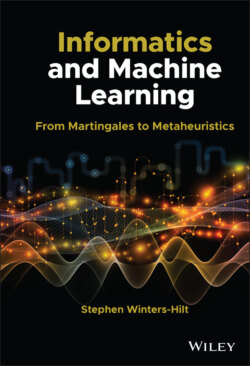Читать книгу Informatics and Machine Learning - Stephen Winters-Hilt - Страница 12
1.1 Data Science: Statistics, Probability, Calculus … Python (or Perl) and Linux
ОглавлениеKnowledge construction using statistical and computational methods is at the heart of data science and informatics. Counts on data features (or events) are typically gathered as a starting point in many analyses [101, 102]. Computer hardware is very well suited to such counting tasks. Basic operating system commands and a popular scripting language (Python) will be taught to enable doing these tasks easily. Computer software methods will also be shown that allow easy implementation and understanding of basic statistical methods, whereby the counts, for example, can be used to determine event frequencies, from which statistical anomalies can be subsequently identified. The computational implementation of basic statistics methods then provides the framework to perform more sophisticated knowledge construction and discovery by use of information theory and basic ML methods. ML can be thought of as a specialized branch of statistics where there is minimal assumption of a statistical “model” based on prior human learning. This book shows how to use computational, statistical, and informatics/algorithmic methods to analyze any data that is captured in digital form, whether it be text, sequential data in general (such as experimental observations over time, or stock market/econometric histories), symbolic data (genomes), or image data. Along the way there will be a brief introduction to probability and statistics concepts (Chapter 2) and basic Python/Linux system programming methods (Chapter 2 and Appendix A).
